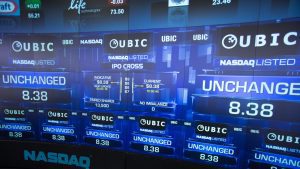Please note that the original article is in Japanese. The following is a summary of its content.
Summary: Two Major Changes from SAB 121
On March 31, 2022, the U.S. Securities and Exchange Commission (SEC) published Staff Accounting Bulletin No. 121 (SAB 121). This bulletin provides interpretive guidance for companies that safeguard crypto-assets for their customers.
This introduces two significant practical changes:
- On-Balance Sheet Recognition: Companies must now recognize a liability at fair value for their obligation to safeguard customer crypto-assets, along with a corresponding asset (the held crypto) at fair value. This is required regardless of whether the company has “control” over the assets.
- Expanded Disclosure: Companies must now disclose the risks associated with holding these assets not only in the financial statements but also in other sections of their filings, such as Description of Business, Risk Factors, and Management’s Discussion and Analysis (MD&A).
Background and The New Accounting Treatment
The proliferation of crypto-asset platforms has exposed companies and investors to unique risks. SAB 121 aims to enhance investor information regarding these risks.
The Old Method (Pre-SAB 121): Previously, US GAAP was unclear on this topic. AICPA guidance suggested that accounting hinged on “control.” If the user retained control (e.g., in a trust wallet), the user recognized the asset. If the custodian had control, the custodian recognized it. This often allowed custodians to treat customer crypto-assets as off-balance sheet.
The New Method (SAB 121): SAB 121 effectively eliminates the “control” assessment for this purpose. All customer-safeguarded crypto-assets must now be recognized on the custodian’s balance sheet.
Scope, Application, and Market Impact
- Who: The guidance applies to SEC registrants, companies conducting an IPO, and private companies undertaking a SPAC merger.
- When: It is effective for the first interim or annual period ending after June 15, 2022 (i.e., Q2 2022 for a 12/31 filer), with retrospective application required.
Case Study: Coinbase Example Coinbase implemented SAB 121 in its Q2 2022 (June 30) Form 10-Q, applying it retroactively to January 1, 2022.
- The company recognized new “Customer crypto assets” and “Customer crypto liabilities” of $88 million.
- The article highlights a paradoxical effect: Despite the price of Bitcoin falling by more than 50% in that period, Coinbase’s total assets reportedly “ballooned approximately 5x” from $21 million (Dec 31, 2021) to $105 million (June 30, 2022) as a direct result of this accounting change.
- Coinbase also added significant disclosures to its Risk Factors section, with more detailed explanations expected in its annual Form 10-K.










